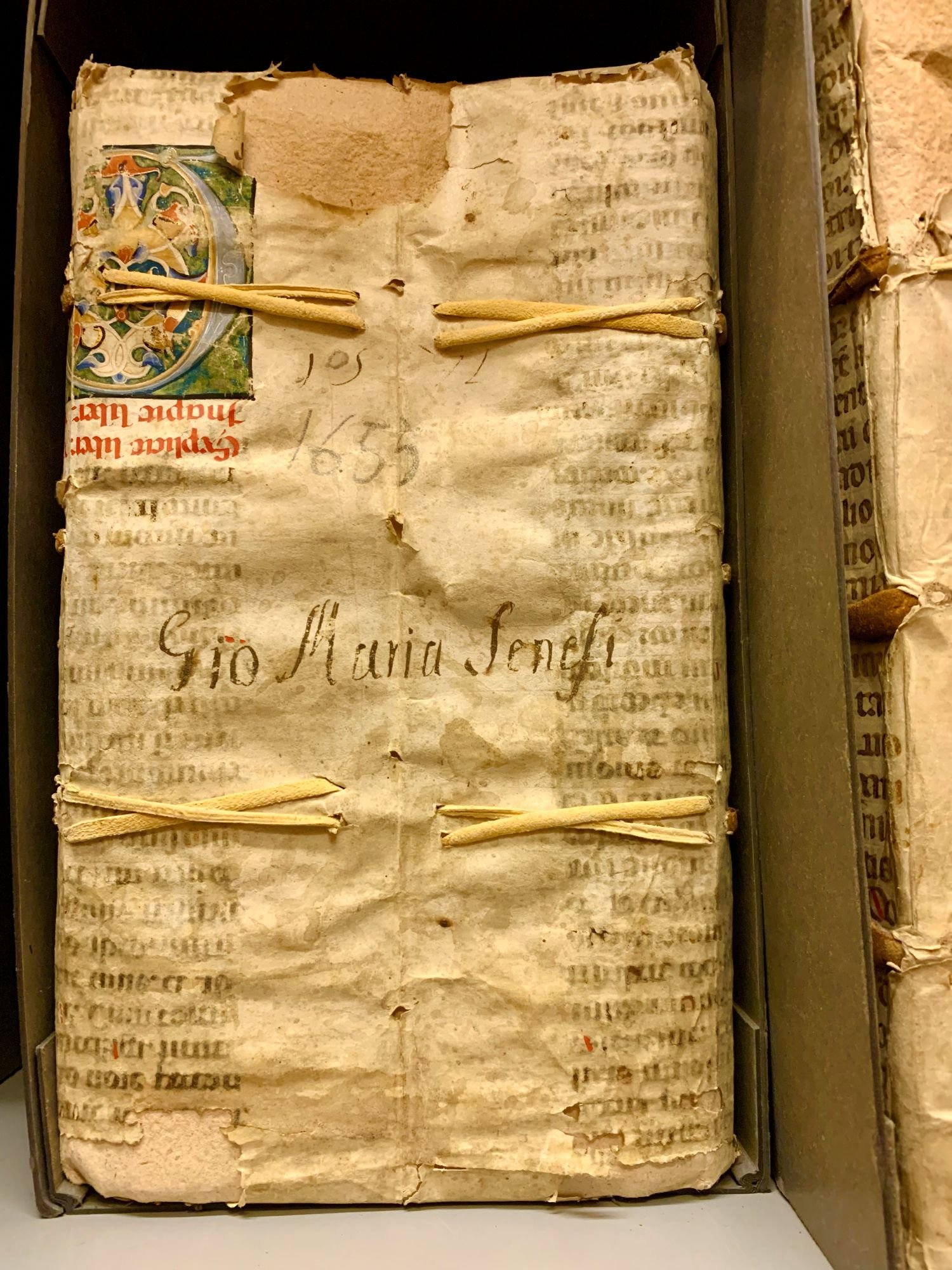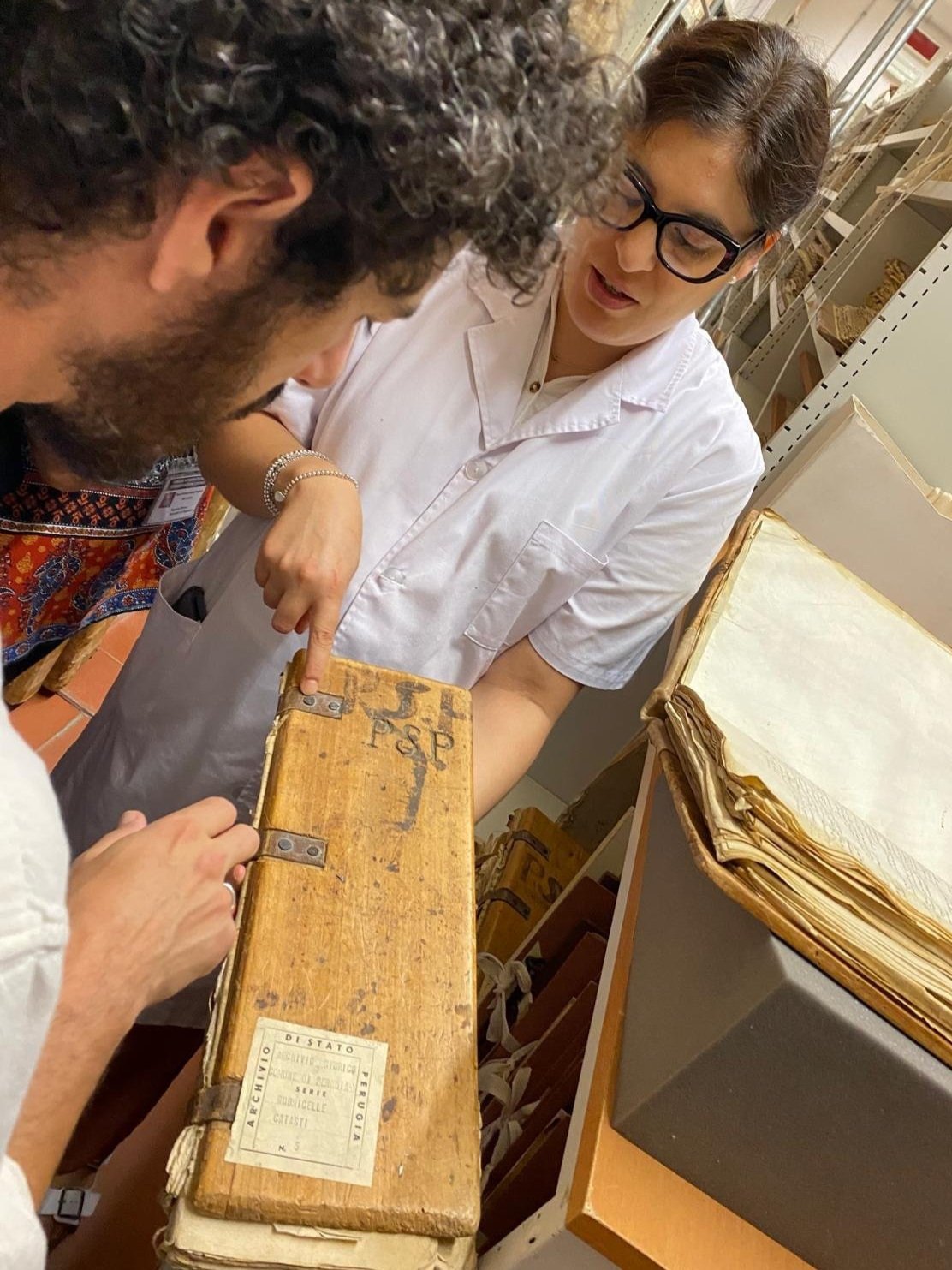Amelia International Conservation Studies
Syllabus - Conservation of Manuscript and Printed Archival Material
Summer Semester, 2026
Mon, June 22 - Fri, Jul 3, 2026 (two last weeks)
Amelia, Italy
Meets daily: Monday – Friday, 09:00 AM – 12:00 PM (4 weeks)
Afternoon Workshop: Monday - Friday, 2:00 PM - 6:00 PM (4 weeks)
Location: Biblioteca Comunale Largo Caduti dì Nassiriya e Kabul, 1 (classroom for both lectures and workshop)
Lead Instructor: Lorena Tireni
No prerequisites required.
Course Description:
The course is an introduction into the main principles and basic skills required for the conservation of paper based archival material in the forms of manuscripts and printed documents. Through a series of lectures on the theory of conservation and practical workshops students will apply their newly learned skills on document samples as well as on selected original documents from the Amelia Historic Archives (13th-19th centuries) under the careful supervision of their instructors.
Summary of Lecture and/or Workshop Content
● Ancient writing supports: clay tablets, ostraca, papyrus, parchment
● Manuscript documents
● Inks
● History and techniques of printing
● Ancient and contemporary forms of archival materials
● Flat archival material: documents, letters, maps, posters, photographs, etc.
● Scrolls
● Bookbindings of archival material
o Covers and slipcases
o Stitched, glued and staple bindings
o Non-adhesive, tacketed, ledger, limp and semi-limp bindings
o Western and oriental unsupported bindings.
● Seals and stamps
● History and making of decorated papers
Approach to the conservation of paper documents:
● Concepts and principles of preservation, preventive conservation and conservation of archival material
● First Aid preventive conservation treatments
● Documentation methods and techniques
● Terminology of paper conservation
● Conservation planning
● Processes of paper conservation of archival material
o Equipment
o Materials
o Techniques
o Outcomes
Deterioration of paper documents:
● Main causes of deterioration
● Terminology of paper deterioration agents
● Processes and examples of deterioration.
Conservation treatments for paper archival material:
● Dry cleaning
● Humidification
● Flattening
● Washing
● Sizing
● Drying
● Paper repairs and infills
● Lining
● Adhesive tape removal
● Solvent cleaning
● Handling, mounting and housing techniques for storage and display
Additional Information:
This course is aimed at students who are seeking a career in conservation and for those interested in working with paper-based archival collections in libraries, archives or museums. It will provide them with a basic introduction to the principles and practices of paper conservation, that can lead to further education in the field, as well as a fundamental understanding of the processes of deterioration and the practical skills necessary for the conservation and preservation of paper archival material.
The practical conservation work to be carried out during the workshop will make use of trial objects for training purposes and will also include actual conservation work on original material from the Amelia Historic Archives (13th-19th centuries).
The course will include study visits to local libraries and archives, providing the students with a rare opportunity to experience real case studies and see rare archival collections.
Student Learning Outcomes:
Students who successfully complete this course will be able to:
● Describe the physical properties of paper documents and identify the agents of deterioration
● Complete condition assessment and treatment reports.
● Understand and evaluate the conservation needs of paper objects and make critical choices on conservation treatments and preservation measures.
● Apply basic conservation treatments, such as surface cleaning, paper repairs, wet treatments, adhesive tape removal, etc.
● Select appropriate materials and apply techniques for the housing and display of archival material.
Recommended Reading
● Bainbridge, A. (Ed.). Conservation of Books, Routledge, 2023 https://doi.org/10.4324/9781003162674
● Bamber Gascoigne, How to Identify Prints, A complete guide to manual and mechanical processes from woodcut to ink-jet, Thames and Hudson, 1986. (free access here: https://archive.org/details/howtoidentifypri00gasc/page/n7/mode/2up)
● Dard Hunter, Papermaking, The History and Technique of an Ancient Craft, Dover, New York, 1978
Late Assignment Policies
Students work on projects simultaneously as they wait for various stages to dry. Projects may be completed in any order as there is no individual deadline for each of the projects, but all work must be completed by the final day of class in Amelia, Italy. The workshop lab is dismantled the following day after the program ends and students will not have access to materials or lab space. No work is accepted after the last day of class.
Must be taken with the following co-requisite:
Paper Media and Conservation of Art on Paper









